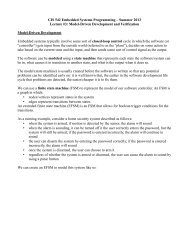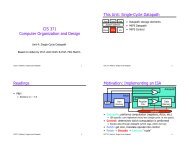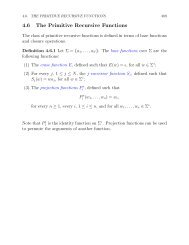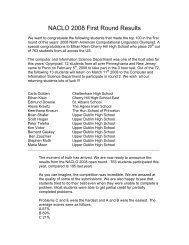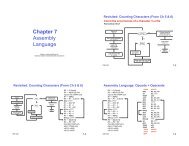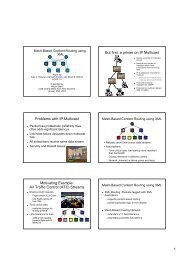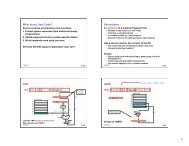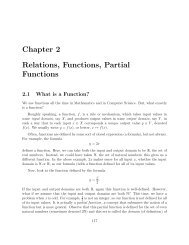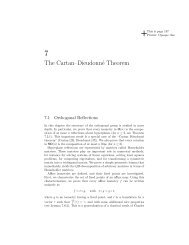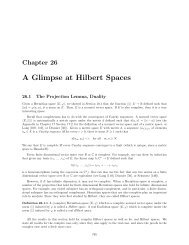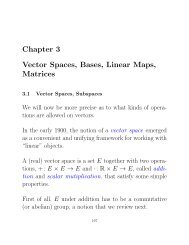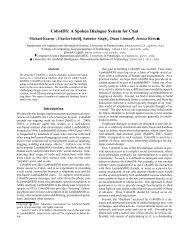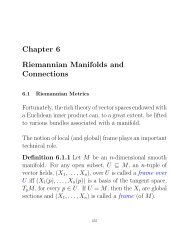Chapter 3 Context-Free Grammars, Context-Free Languages, Parse ...
Chapter 3 Context-Free Grammars, Context-Free Languages, Parse ...
Chapter 3 Context-Free Grammars, Context-Free Languages, Parse ...
You also want an ePaper? Increase the reach of your titles
YUMPU automatically turns print PDFs into web optimized ePapers that Google loves.
3.12. OGDEN’S LEMMA 69<br />
(ii) If sj is in the path, sj is not a leaf, and sj has a single immediate descendant which is<br />
either a marked leaf or has marked leaves as its descendants, let sj+1 be that unique<br />
immediate descendant of si.<br />
(iii) If sj is a B-node in the path, then let sj+1 be the leftmost immediate successors of sj<br />
with the maximum number of marked leaves as descendants (assuming that if sj+1 is<br />
a marked leaf, then it is its own descendant).<br />
(iv) If sj is a leaf, then it is a marked leaf and n = j.<br />
We will show that the path (s0,...,sn) containsatleast2r +3B-nodes.<br />
Claim: For every i, 0≤ i ≤ n, if the path (si,...,sn) containsbB-nodes, then si has at<br />
most p b marked leaves as descendants.<br />
Proof . We proceed by “backward induction”, i.e., by induction on n − i. Fori = n, there<br />
are no B-nodes, so that b = 0, and there is indeed p 0 = 1 marked leaf sn. Assume that the<br />
claim holds for the path (si+1,...,sn).<br />
If si is not a B-node, then the number b of B-nodes in the path (si+1,...,sn) isthesame<br />
as the number of B-nodes in the path (si,...,sn), and si+1 is the only immediate successor<br />
of si having a marked leaf as descendant. By the induction hypothesis, si+1 has at most p b<br />
marked leaves as descendants, and this is also an upper bound on the number of marked<br />
leaves which are descendants of si.<br />
If si is a B-node, then if there are bB-nodes in the path (si+1,...,sn), there are b +1<br />
B-nodes in the path (si,...,sn). By the induction hypothesis, si+1 has at most p b marked<br />
leaves as descendants. Since si is a B-node, si+1 was chosen to be the leftmost immediate<br />
successor of si having the maximum number of marked leaves as descendants. Thus, since<br />
the outdegree of si is at most p, and each of its immediate successors has at most p b marked<br />
leaves as descendants, the node si has at most pp d = p d+1 marked leaves as descendants, as<br />
desired.<br />
Applying the claim to s0, sincew has at least K = p 2r+3 marked occurrences, we have<br />
p b ≥ p 2r+3 , and since p ≥ 2, we have b ≥ 2r +3,andthepath(s0,...,sn) containsatleast<br />
2r +3B-nodes (Note that this would not follow if we had p =1).<br />
Let us now select the lowest 2r +3B-nodes in the path, (s0,...,sn), and denote them<br />
(b1,...,b2r+3). Every B-node bi has at least two immediate successors ui



